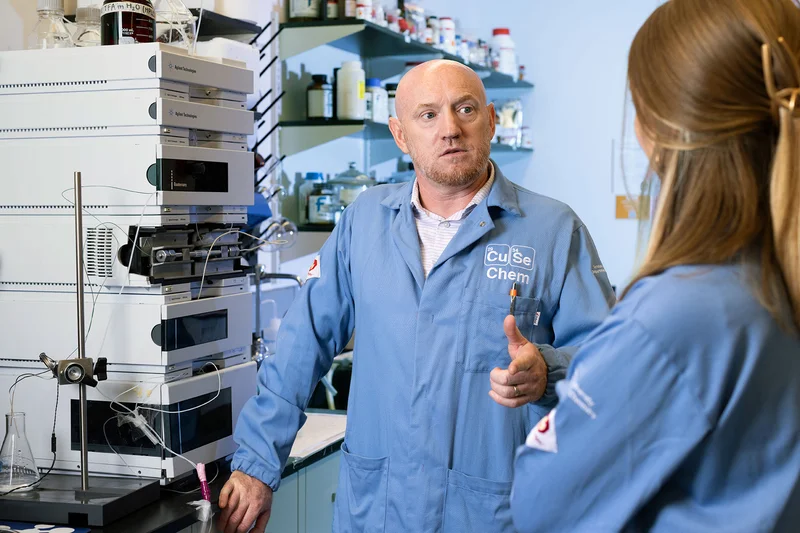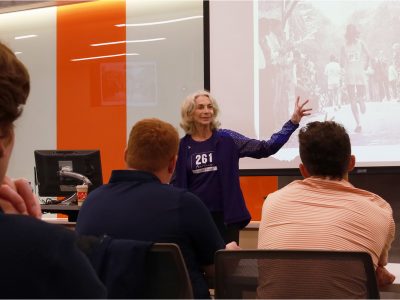Striving to Improve the Efficacy of Obesity, Diabetes Treatments
Syracuse University chemist Robert Doyle develops breakthrough peptide treatments that improve weight loss and glucose control without harmful side effects.
The cutting-edge weight loss and diabetes research developed by medicinal chemist Robert Doyle has offered significant and consistent weight loss and glucose control to its recipients through peptide-based treatments.
Doyle and his fellow collaborators reported that two new peptide compounds—GEP44 and KCEM1—considerably reduce body weight and normalize blood glucose levels without causing the typical negative side effects experienced by patients who take currently available GLP-1-based anti-obesity drugs.
Doyle, the Jack and Laura H. Milton Professor and Dean’s Professor of Chemistry in the College of Arts and Sciences, focuses his research on pharmaceutical drug development for the treatment of obesity and type 2 diabetes. He says that while the first-generation of weight-loss drugs did lead to results, there was a problem: while weight loss occurred, it was almost a reaction to taking the GLP-1 peptide, and that weight loss came with a cost.
Due to side effects like nausea, vomiting, diarrhea and abdominal pain, 70% of patients who started taking these drugs were not taking them one year later, and that 30% stopped taking the drugs within three months, generating a very low patient tolerability for the drugs, Doyle says.
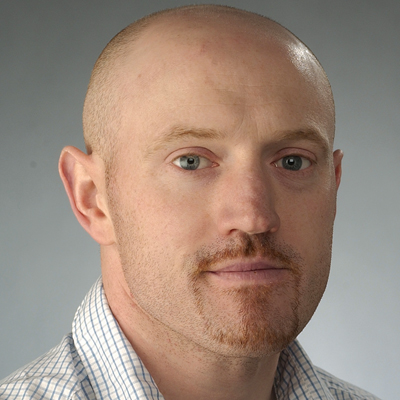
The recent discoveries Doyle and his collaborators introduced at conferences of the American Chemical Society and The Obesity Society give hope for those battling obesity and type 2 diabetes. The methodology behind these peptide and similar weight-loss compounds could also hold the key to treating two other public health crises: cardiovascular disease, the leading cause of death in the U.S., and opioid addiction.
“As medicinal chemists, we are focused on using peptides, or small proteins, to treat neuroendocrine disorders, primarily disorders that affect the brain,” says Doyle, the Dean’s Professor of Chemistry and adjunct associate professor of medicine and pharmacology. “We are looking at addiction, cravings, food intake, body weight reduction, glucose regulation, all those complex endocrine issues that are prevalent today.”
On this “’Cuse Conversation,” Doyle discusses his breakthrough weight loss research, the important role students play in advancing his research, and how, through philanthropy, his work has come to life.
How has this field evolved over the years?
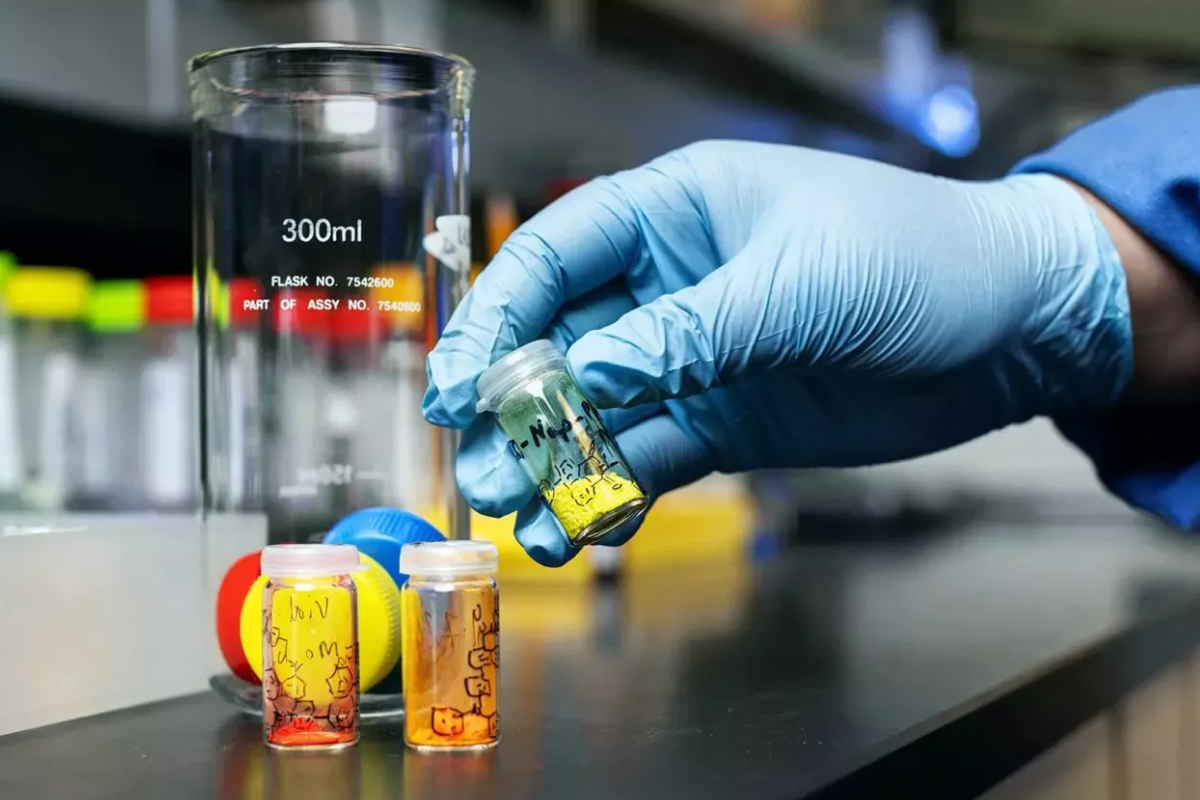
The major change in the last 10 years is the creation of these GLP-1 drugs, exemplified by Ozempic and Zepbound. Until these drugs existed, there were no safe, viable weight loss alternatives. Diet and exercise have always been on the table, of course, but for people who needed or wanted a pharmaceutical intervention, there was nothing that could achieve anything greater than the 5% body mass index [BMI] loss that you’d be looking for to have any kind of clinical benefit.
With the creation of the first real breakthrough drug, Victoza, you were seeing that 5% BMI decline from a pharmaceutical perspective, and that was a huge success. That set the stage for these newer, more potent and more active weight-reducing drugs. But those initial drugs were often once- or twice-a-day injectables, and patients didn’t want to do that. In these last few years, we have upwards of 10% and greater body mass reduction coupled with once-a-week injectables. That has really broadened the appeal and created quite a phenomenon.
How did we proceed from the first generation of weight loss drugs to where we are now?
There was this discovery that this little hormone that you make in your stomach, if made long-acting and then injected, could trigger food intake reduction. We realized that and did pharmacological science to improve its half-life, make it hang around longer so it would maintain what was normally only a very short activity in a human. We drove that appetite off switch. The discovery of GLP-1—and what GLP-1 could do—hasn’t won a Nobel Prize yet, but it is going to. I wouldn’t be surprised this year if you see the Nobel Prize awarded for the discovery of GLP-1 because it has revolutionized weight loss.
How has Syracuse’s Center for Science and Technology enhanced your studies?
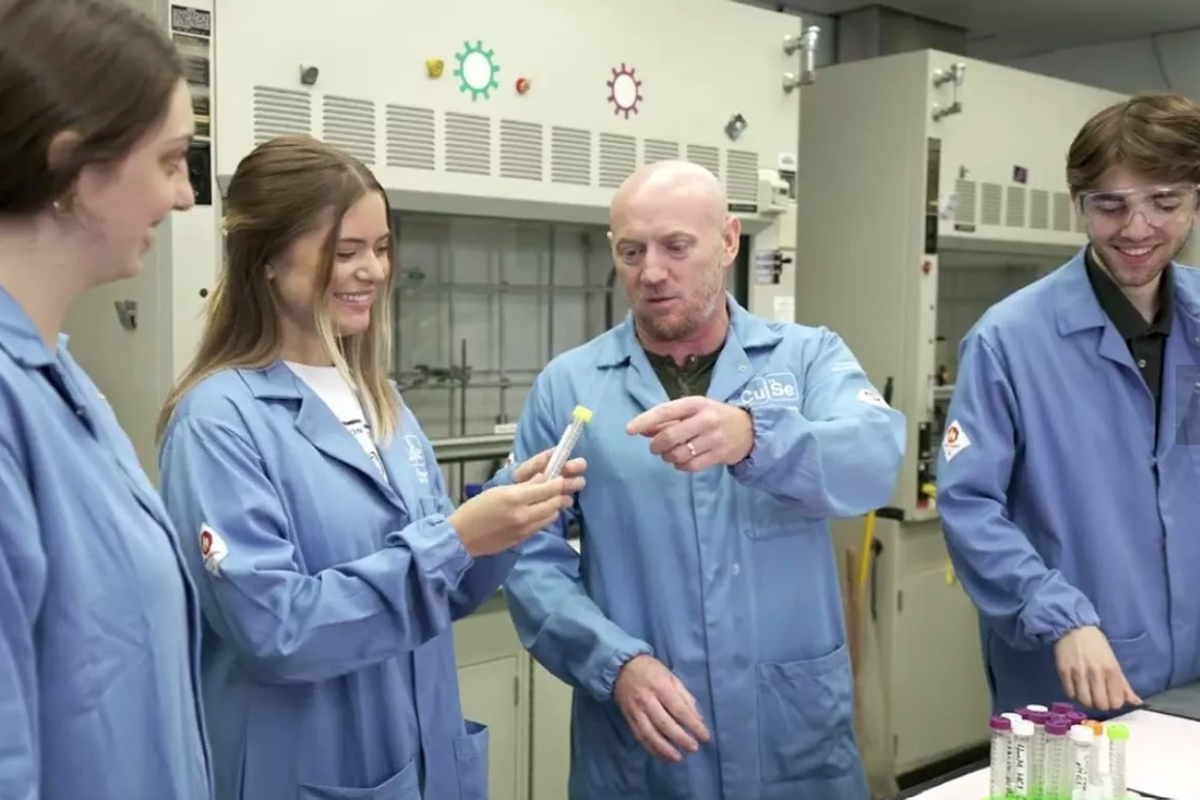
Within my own lab, we have multiple large scale peptide synthesizers that allow us to produce gram quantities of these drugs. We have multiple purification setup systems so that we’re able to purify to 99%, and we have cell labs that can screen for the required receptor binding.
We also have artificial intelligence and a molecular operating environment, these computational chemical approaches to aid in design. We can start from a concept on a piece of paper, begin to design something computationally and then physically make it in the lab. If it makes the grade, we put something in place that outlines what we want the drug to be able to do, and if it meets those criteria, it goes out into preclinical animal models at the University of Pennsylvania in this case. We’ll look and see if what we’ve created here is manifesting the effect we want it to in that preclinical model. If not, we go back to the drawing board. But if it does, we call that a hit and we’ll begin the process of optimizing it for development.
How do our students assist with your research?
They’re the ones who are in there grinding out the production, the purification, the screening, the failures and the redesigning. They bring passion and intellect. They’re wonderful. They roll up their sleeves. They jump wholeheartedly into all the aspects of drug development. I have to be willing to trust them that they’ll do it right. They have that sense of confidence, inquisitiveness and can-do. Every day they surprise me with some wonderful question or clever idea.
